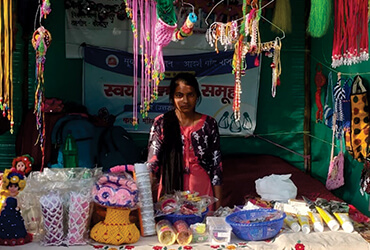
11 October, 2024
Self Help Group
We all have read and heard that India was called the ‘Sone Ki Chidiya’. It’s just about 250 years ago when India's contribution to the world GDP was 27 percent and we were the leader in the world. But when we got independence in 1947, we were standing several notches below with only 4 percent GDP. During its rule, Britain exploited colonial India to such an extent that there was a shortage of many important commodities including grains, clothes, kerosene in the market of the country that supplies food to the entire world. Famous economist and professor Angus Maddison wrote many books on the global economy, he also did an in-depth study on the Indian economy. According to Angus, from the first century to the end of the 17th century, India stood first in the world in terms of gross domestic product.
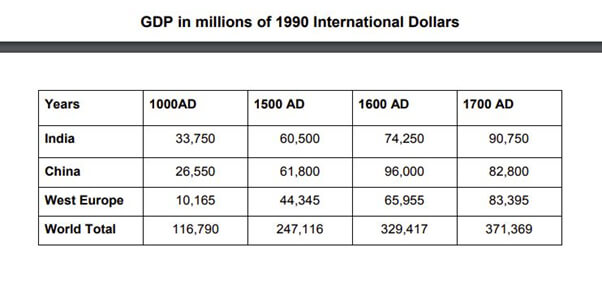
Sone Ki Chidiya Bharat - The reason for this achievement of India was the small industries spread in every village of India. In these agriculture based industries, the people of the villages formed different groups and prepared different products. The raw mallas grown by the farmers were found in the villages. Only one finished product was made. Which was in great demand in the global market. The handicraft artisans here were praised all over the world. Megasthenes has given a detailed description of the rich and diverse economy of India. He has also written about India's agriculture, abundance of fertile land, use of advanced irrigation techniques as well as India's trade and commerce, in which he has said that India is at the top in the world as a major center of international trade. Megasthenes has also explained in detail about the social condition of India that the role of Indian women is not only strong domestically but they also have an important contribution in economic activities.
'Indica' also contains detailed descriptions of the food and spices of India and the different styles of clothing worn by Indians.
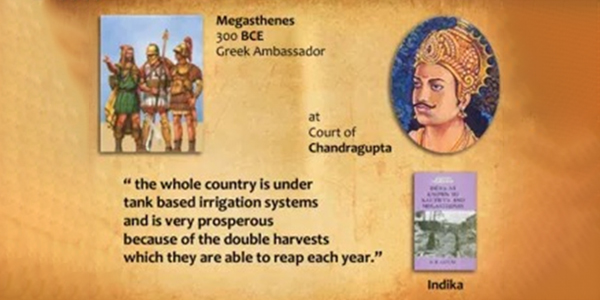
(Megasthenes Quote in Indika)
The industries run by conglomerates were actually the foundation of India's economy. Responsibilities of everyone in the group were determined. 85 percent of the people lived in villages and 95% of the income was derived from agriculture and agro-based industries.
How India Was Looted - As the East India Company expanded its trade in India, its conspiracies also started. From the beginning he worked on the plan to make India a consumer country.
With gradually increasing influence, the East India Company brought many Indian kings under its control and defeated many of them in wars and made India its colonial country. After this he started decentralizing Indian industries. They reduced taxes on India's raw material exports, allowed uncontrolled imports of finished goods into Britain, and imposed high taxes on India's finished products.
Due to this, India's industries and businesses were closed. India had now become a producer of raw materials and a consumer of finished goods.
Only raw silk, cotton, wool, sugar, indigo and jute etc. started being exported from India.
India after independence - After independence, India was struggling with partition, religious and caste riots, inexperienced government and many changes.
The condition of industries was also not good, many factories were closing. Amidst these worsening circumstances, India had to face many wars with neighboring countries. It took some time for India to recover, but now slowly India was moving on the path of progress. Many provincial governments had also created a friendly environment for industries.
In 1959, Jaswantiben was chatting with her six friends in the verandah of their house in a village in Maharashtra. during these conversations the idea of starting a papad business in free time came to their mind . But even after having the idea, he faced the problem of lack of money and sought help from Chhaganlal Pareek, a social worker of the area. Pareek ji lent them 80 rupees. What was it then, bought a papad making machine, made papad and fed it to big businessmen.
When the traders liked the papad, big orders started coming. It was with the help of Chhaganlal Pareek ji that they got training in things like marketing and account handling. After some time this group of 7 women became a cooperative system. The business that started with 4 packets has now become worth Rs 1600 crore and 4500 women are associated with it.
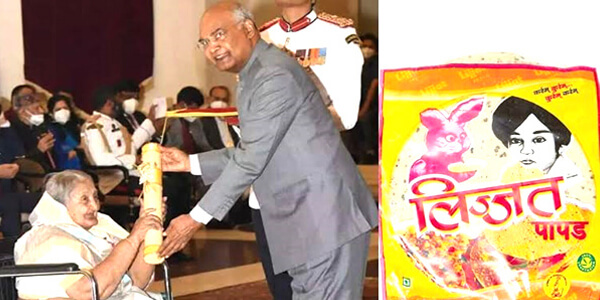
Even before the British, such group businesses existed in India, after independence, even if on a small scale, the society started forming groups in a cooperative spirit.
Self Help Group In India- Although the Textile Labor Association had started such a thing by forming a women's wing in Ahmedabad in 1954, but it got strength with the formation of Self Employed Women's Association (SEWA) in 1972.
Then the success of businesses like Lijjat Papad forced the government to think in this direction and in 1991-92, NABARD formed the Self Help Group Bank Linkage Project. After which a large number of self-help groups were started.
At present, in the financial year 2023-24, there are about 56.13 lakh self-help groups registered across the country, which were given a loan of about Rs 2 lakh crore (206241.55 crore) by the government.
What is self help group - it mean in a sentence ‘One should help Oneself.’ In these groups, 10 to 20 people come together with a common objective, they pool together money, contribute equally and collectively create their own livelihood.
Or a loan is given to a member with the consent of all the members, through which that member creates livelihood for himself at a fixed interest rate. This process is self-help group. After this some name of SHG is kept.
Objective and importance of SHG - Any government has its own limitations, that is why self-help groups are encouraged to solve socio-economic problems. This reduces dependence on others, develops the habit of saving and increases banking and digital awareness.
Along with this, entrepreneurship develops in the person and will power increases. This not only helps the marginalized individuals and communities to come forward, it also increases gender equality and reduces dependence on agriculture. These groups also work like pressure organizations in the society.
How SHGs work - SHGs are more successful in rural areas. They do not have to be registered under any act of the government, they are voluntary organizations. Monthly meetings are held in these, all members contribute. The loans and bank accounts given in that month are reviewed and the decision is taken only with the consent of everyone.
SHGs are formed through Gram Panchayat, Bank or NGO. Government schemes are discussed in the groups and efforts are also made to avail the benefits of the schemes. Records of all banking transactions and maintenance etc. are maintained.
Group members get information about management, skill training and livelihood generation methods.
In this, loan is not given to anyone outside the group.
Surya Self Help Group - Surya Foundation has become a leading organization in encouraging women self-reliance. Padmashree Jayprakash Aggarwal, Chairman of Surya Foundation, after deep analysis, found that the best way to give respect and self-reliance to women in the rural background of India is to unite them, train them and create livelihood for their families.
With the same idea, self-help groups were also included in the Adarsh Gaon Scheme of Surya Foundation. The workers of the organization make women aware about self-help groups.
Meetings are organized by contacting women in villages, then interested women are given training on how to form a group, how to open a bank account, how to organize data and how to do accounts etc.
At present, 181 groups in 61 villages across the country are being run with the inspiration of Surya Foundation, about 2 thousand women are associated in these groups. Surya Foundation has not only contributed in the formation of groups but has also worked in maintaining the significance of the groups. The organization also helps the women of the groups that produce goods in providing necessary materials, helps in providing machines and also provides training related to the product. Once a year, a 5-day women's self-reliance camp is also organized at Surya's training center Surya Sadhana Sthali, Jhinjhauli. After the products are ready, the organization also helps in their sale and necessary training in marketing is also given to the women.
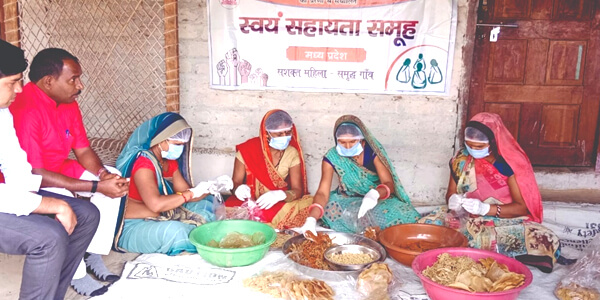
Women associated with the organization are making various products like washing powder, dish wash, toilet cleaner, phenyl, pickles, papad, incense sticks and incense sticks etc. Toran, pendants, bracelets and other jewelery etc. are made in handicraft. When the product is ready, the product is packed in the name of the group and the goods are sent to the market for sale.
With the help of self-help groups, many women have not only become self-reliant but are also able to support their families well.
The groups running with the support of the organization have so far received a loan of Rs 1 crore 77 lakh 39 thousand from the government, which has ensured their income.
For India to once again become the leader in the world, it is necessary to generate revenue from villages.
With this idea in mind, Surya Foundation is continuously emphasizing on the growth of self-help groups.
